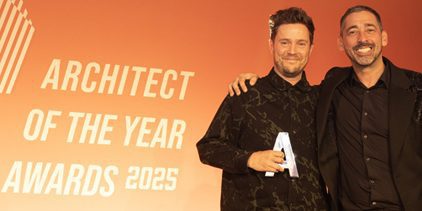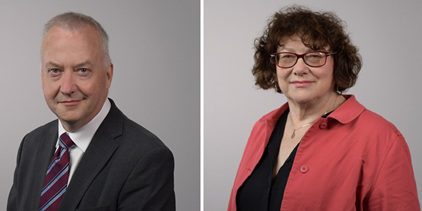Can we really build greener, healthier cities? Award-winning research shows how
Posted on: 12 September, 2025
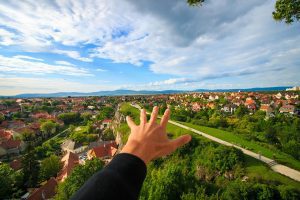
How do we solve the housing crisis, cut carbon emissions, and harness new technologies without losing sight of people and place?
These questions are at the heart of research by University of the Built Environment academics – work that has now been recognised as award-winning on the international stage at two leading conferences, Association of Researchers in Construction Management (ARCOM) and Sustainable Ecological Engineering Design for Society (SEEDS).
From Dr Graeme Larsen’s exploration of the future of housing, place-building and health to Dr James Ritson’s call for resilient, decarbonised communities, and from Dr Pippa Boyd’s work on AI use for regenerative cities to Dr Richard Davies’ rethink of what a ‘sustainable project’ really is, these projects show how academic research can drive real-world change.

Left to right: Dr Graeme Larsen, Megi Zala, Dr Richard Davies and Dr James Ritson
Rethinking housing: why local builders could hold the key to healthier communities
Dr Graeme Larsen, Prof Angela Lee and Megi Zala (The King’s Foundation)
England’s housing debate has long been dominated by a handful of large national developers. But new research shows this may be holding us back from creating truly sustainable neighbourhoods.
The study, entitled ‘Beyond Units: Regional insights into the creation of sustainable communities’, highlights the overlooked role of smaller, regional housebuilders, who understand local identity and can deliver homes that do more than just boost numbers. As the authors put it: “Rather than reducing success to the number of units built, this study reintroduces regionalism, place, and sustainable community development into the debate.”
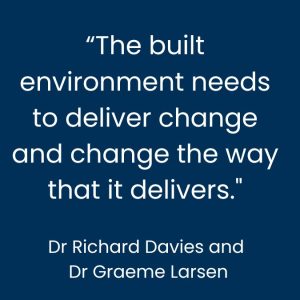 Megi, a research associate on sustainable urbanisation, picked up the Emerald Prize at SEEDS for this research.
Megi, a research associate on sustainable urbanisation, picked up the Emerald Prize at SEEDS for this research.
From retrofit to regenerative cities: new research shows how to unlock investor confidence
Dr Pippa Boyd, Dr Graeme Larsen and Ankit Singh (Waterman Group)
Retrofitting old buildings is one of the fastest ways to cut carbon emissions. But how do we persuade investors to back projects that aim not just for net zero, but for fully regenerative cities?
That’s the challenge tackled by this award-winning paper From Initiative to Action: lessons from the journey to net zero through retrofit for building regenerative cities. The findings reveal deep mismatches between how developers and investors talk about sustainability. “Findings suggest confused rationales and vocabularies between investor-side and operator-side stakeholders,” the authors state. The research offers frameworks to bridge that gap – turning bold green plans into investment models that make financial sense.
The paper was awarded the Chair’s Prize for Best Paper at ARCOM, recognising its excellence and contribution to advancing knowledge in construction management research.
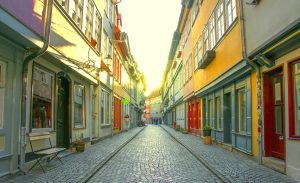
Can AI really build greener cities? New research uncovers the ethical dilemmas
Dr Pippa Boyd and Debs Harding (Heriot-Watt University)
AI is sweeping through the built environment, from planning software to generative design tools. But can it really deliver sustainable cities? And at what cost?
Digitalisation in Regenerative Cities: opportunities and challenges in the Built Environment shows that professionals are experimenting with AI on real projects but remain deeply uneasy about accountability. “Participants reported informal experimentation with GenAI, but also expressed uncertainty over authorship, accountability, and ethical use,” the authors state. It’s a reminder that technology alone won’t save us – it depends on how humans use it.
Designing for resilience: why decarbonisation is make-or-break for communities
Dr James Ritson
What happens if communities don’t decarbonise fast enough? According to Dr James Ritson, the choice is stark: “Decarbonisation or demise”.
He states: “It is estimated that up to 80% of the buildings that will exist in 2050 have in fact, already been built. It is therefore argued that if any of the climate change goals are to be met, we need to radically reduce the carbon emissions from our existing building stock.”
His research on sustainable solutions for resilient communities has already attracted international attention, with a book chapter, ‘Energy Performance Certificates applied to Historic Buildings: A Clash Between Method and Context’ due for publication in October 2025.
What counts as a sustainable project? New research challenges the status quo
Dr Richard Davies and Dr Graeme Larsen
Construction projects are the building blocks of the built environment – but what does it mean for a project to be truly sustainable?
The authors argue that focusing only on the delivery of assets risks missing the bigger picture of long-term system change. Their paper ‘What is a sustainable construction project?’, awarded the prestigious Chair’s Prize for Best Paper at SEEDS, explores the question directly. They call for a need to shift thinking from sustainable “construction projects” to “sustainable construction” projects, broadening the scope to tackle the scale of sustainability challenges society faces. As they put it: “The built environment needs to deliver change and change the way that it delivers.”
‘International impact’
Professor Angela Lee, Associate Dean – Research, said of these achievements: “These successes not only showcase the international impact of our research but also celebrate the talent and commitment of our academic community.”
Want to help make a difference? Explore our full range of University of the Built Environment courses.


